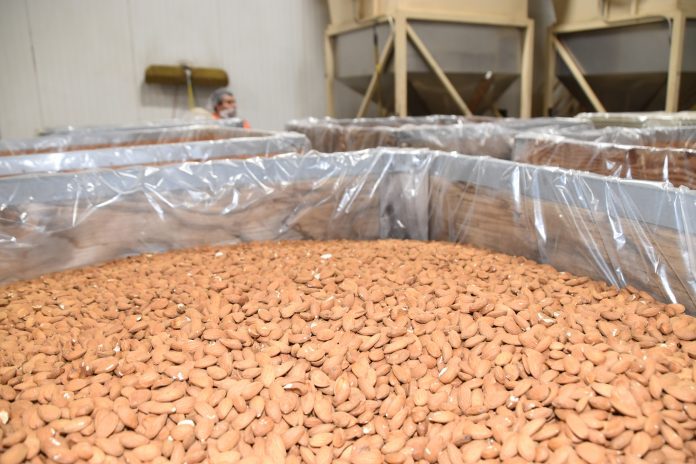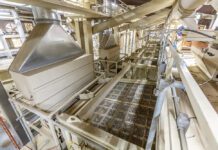As we have reported in this column several times over the past year, pesticide activists are going all out against pesticide use in California and using every mechanism they can to attempt to accomplish that goal. The latest attack comes from the Center for Biological Diversity (CBD) and Californians for Pesticide Reform (CPR) who submitted a petition to request that the California Air Resources Board (CARB) initiate a rulemaking and other appropriate actions to add sulfuryl fluoride to its greenhouse gas inventory and phase out the use of sulfuryl fluoride in California. Sulfuryl fluoride is used in residential fumigation where it is known as Vikane and in commodity fumigation as Profume.
Petitioners’ Position
According to CBD, “This action is necessary due to sulfuryl fluoride’s high Global Warming Potential (GWP). Sulfuryl fluoride is 4,800 times more potent than carbon dioxide in trapping heat, consequently contributing to climate change, and it is a threat to public health. Sulfuryl fluoride also lasts in the atmosphere for 36 years, eight times longer than the lifespan previously assumed when CARB last considered the regulation of sulfuryl fluoride as a greenhouse gas. The concentration of sulfuryl fluoride in the atmosphere is drastically increasing despite the development of successful alternatives to treat insect infestations. California is the largest consumer of sulfuryl fluoride in the world, consuming approximately three million pounds in 2021. Sulfuryl fluoride is also a recognized toxic air contaminant and a neurotoxin, which causes illness, disabilities and death. At least 16 deaths have been attributed to sulfuryl fluoride use in California. The time has come for CARB, an agency committed to climate leadership and public health, to regulate sulfuryl fluoride and phase out its use.”
The largest use of sulfuryl fluoride is in residential use, so most of the petitioners’ comments are focused on residential use. Interestingly, the petitioners claim there are “viable alternatives” to the use of sulfuryl fluoride. These alternatives include temperature manipulation for whole structure treatment, numerous localized treatment options and prevention methods established through Integrated Pest Management. The petitioners claim the treatment alternatives are comparable in price to sulfuryl fluoride, and many have proven comparably effective.
Whole-Structure Treatment (Heat)
Heat is a nonchemical option for whole-structure treatment and localized treatment. The treatment process involves heating all wood in the structure to a minimum of 120 degrees F and holding this temperature for a minimum of 33 minutes. The benefit of heat treatment is the ability to treat the entire structure without using chemicals and the relatively short period of time the structure must be vacated (typically a few hours compared to the days required with sulfuryl fluoride fumigation.)
Orange Oil and Other Essential Oils
Orange oil is an alternative treatment extracted from orange peels. The major components of the oil are chemicals called terpenes or terpenoids and the major active ingredient is d-limonene. D-limonene is considered safe and has a low toxicity. In a 2020 study, orange oil coupled with heat treatment and d-limonene vapors resulted in either complete or almost complete mortality after several days of exposure, including in what would be a heat sink area.
Microwaves
Microwave devices are also available for termite control. Microwaves kill termites by causing fluids inside their cells to boil, which destroys cell membranes.
Electrocution
High-voltage electricity, or electrocution, is another nonchemical option. The device used emits high voltage (90,000 volts) but has a low current (less than 0.5 amps). Death to drywood termites occurs by electric shock, although delayed mortality may also occur from the destruction of intestinal protozoa.
Baiting
Research is currently underway under California’s DPR Pest Management Grant to explore the concept of an “in-wood” baiting system for drywood termites using chitin biosynthesis inhibitors, which are synthetic hormones, as active ingredients. With the bait, the affected termites return to the central part of the colony and die in the vicinity of reproductive termites and eggs.
Whether these controls work or not or are even applicable to commodity fumigation use of sulfuryl fluoride, it is necessary to step back and determine if it is even necessary to consider a ban on the use of sulfuryl fluoride. When you consider the amount of sulfuryl fluoride used, it is negligible in terms of its contribution to climate change. The total annual emissions of sulfuryl fluoride from all sources only amounts to 0.035% of the current total man-made greenhouse gas emissions. To put that in perspective, the concentrations of sulfuryl fluoride in the atmosphere are roughly analogous to a distance of 0.9 miles traveled by a single car compared to the total vehicle miles traveled (VMT) per year by all of the vehicles in California (about 340 billion VMT), or half a single grape compared to the total annual grape production in California (about 5.6 million tons.) Ridiculous!
The petitioners don’t consider any benefits from the use of sulfuryl fluoride, which is now widely used in tree nut fumigation to replace methyl bromide and phosphine, fumigants also targeted by anti-pesticide activists. Sulfuryl fluoride is considered a much safer and more effective alternative and will become a huge issue should CARB consider any action here. The agricultural industry and, in particular, our organization, are actively working against this petition and respectfully requesting CARB to use common sense and practicality when addressing the activists’ complaints and accusations.

Roger A. Isom | President/CEO, Western Agricultural Processors Association
Roger is President/CEO of the California Cotton Ginners and Growers Association and Western Tree Nut Association. He brings over 30 years of regulatory and legislative advocacy experience, specializing in environmental and safety matters. Roger’s responsibilities include the management of both Associations’ staff and day-to-day operations. Roger is also the President of the Ag Energy Consumers Association (AECA), board member and Past President of the Ag One Foundation at California State University Fresno, and manages the Navel Orangeworm Action Committee (NOWAC).
















